| View previous topic :: View next topic |
| Author |
Message |
Gerald


Joined: 25 Mar 2014
Posts: 1196
Location: Brazil
|
 Posted: Mon Oct 06, 2014 6:49 pm Post subject: How to turn a binoculars objective into a tele macro lens Posted: Mon Oct 06, 2014 6:49 pm Post subject: How to turn a binoculars objective into a tele macro lens |
 |
|
Gerald wrote:
When a photographer needs a 200 to 300mm telephoto lens, he/she can imagine three types of solution: the good, the bad... and the funny!
The good
The best solution is simply to buy a lens that was designed since the beginning to be used with the photographer's camera. The second best solution is using a commercial adapter so a lens designed for a different camera than the photographer's could be used.
The bad
A bad solution is when one tries to adapt a lens designed for an application that is much different than usual photography. For example, adapting lenses for process or aerial photography is not in general a good idea. Most of these lenses are heavy, and have no mount or focusing mechanism. Even if possible, adapting in these cases can be a nightmare, and the result is usually cumbersome and impractical.
The funny
Funny are the solutions that can be implemented with little effort and, at the same time, are practical and inexpensive! This post aims to show one such solution. You'll see that if you have all the parts at hand, how a tele macro lens can be set up in minutes.
Implementation
As the title of this post suggests, the idea is to use the front lens (objective) of a Zeiss-type prismatic binocular as a photographic tele macro lens:
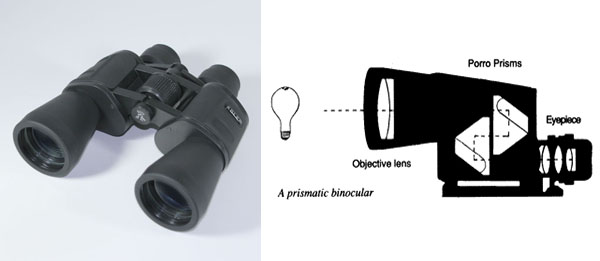
A binocular objective is an achromatic doublet corrected for infinity. The focal length is typically around 200mm and the diameter is 50mm for binoculars with magnification of 7x to 20x. In this case, the relative aperture is the objective is given by:
F-number = 200/50 = F4
The objective lens I used in this experiment was purchased on eBay for only 8 GBP. However if you already have an older binocular that can be cannibalized, you have two objectives for free!
First the objective has to be removed from the binocular and then mounted on a step-up or step-down filter ring. The simplest way to fix the lens is to glue it to the rings. The assembled lens will be like the photo below. I used two rings because I wanted threads on both sides. My original goal was to use the lens as close-up lens for macro photography.
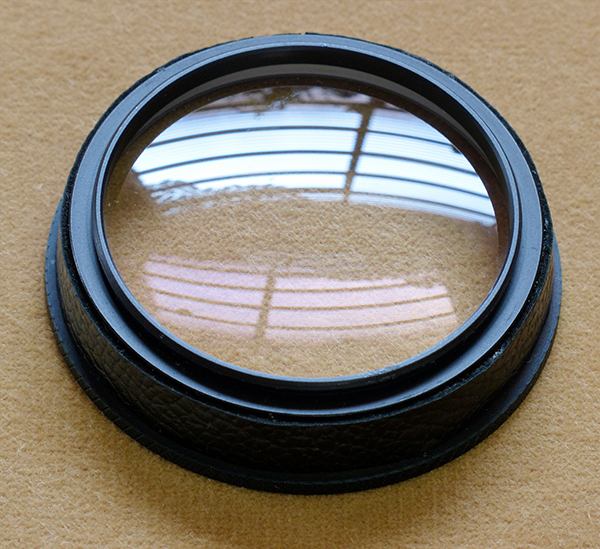
The next step is to mount the lens on a bellows, perhaps with some extension rings if the bellows is short. A rack-and-pinion bellows is ideal but with a bit of skill it is possible to focus using a primitive bellows as the Pentacon.
The weight of the set bellows + extension rings + adapter rings + lens is quite modest:
set with Pentacon small bellows: 607 grams
set with Pentax auto bellows: 843 grams
Pentacon small bellows:
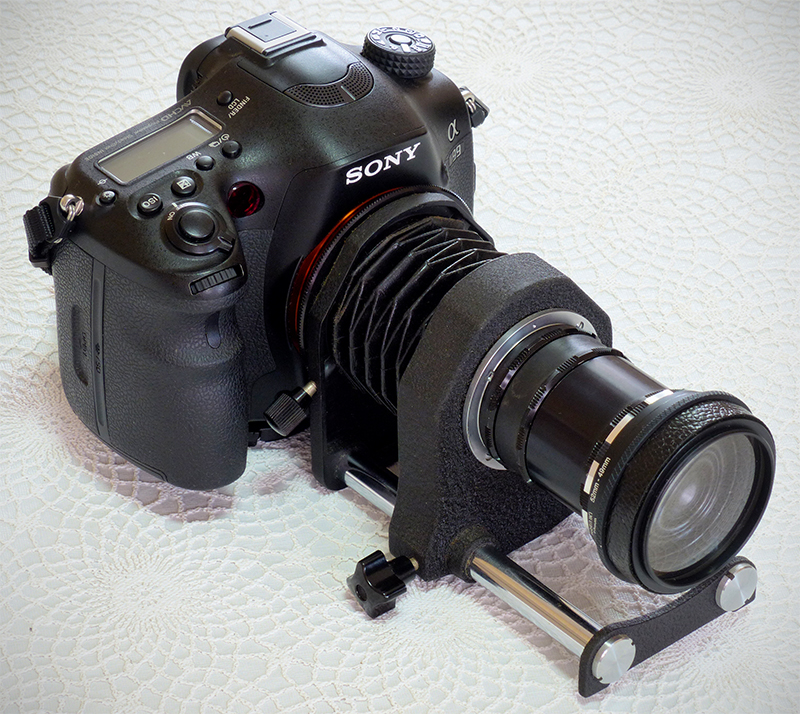
Pentax auto bellows:
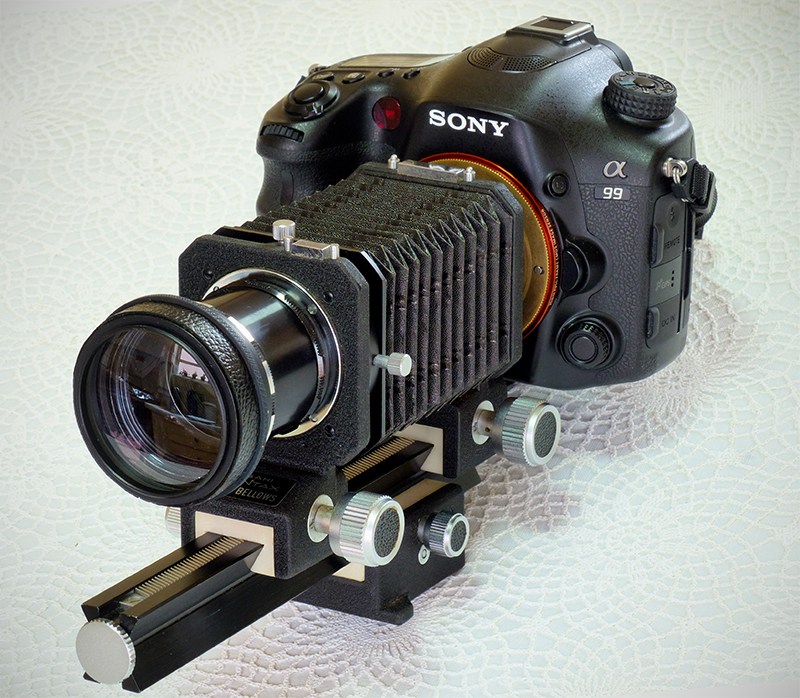
If the bellows is long enough, it is possible to focus to surprisingly small distances. With the Pentax auto bellows and extensions rings I could do close-ups with magnification of 1:2.5 approximately.
If desired the aperture can be reduced with a disk of plastic or cardboard with a hole in the center. The relative aperture of the tele macro will then be given by:
F-number = 200/D, where D is the hole diameter in mm.
Results
The photo below shows a pot plant at a distance of approximately 3 meters. The depth of field is extremely small. Note how the bokeh is excellent.
The bellows allowed closer focusing than the usual telephoto lenses. The 100% crops show that sharpness is pretty good.
Pot plant about 3 meters away at F4 (wide open) - full picture:

Pot plant about 3 meters away at F4 (wide open) - 100% crop:

Close-up of pot plant at F4 (wide open) - full picture:

Close-up of pot plant at F4 (wide open) - 100% crop:
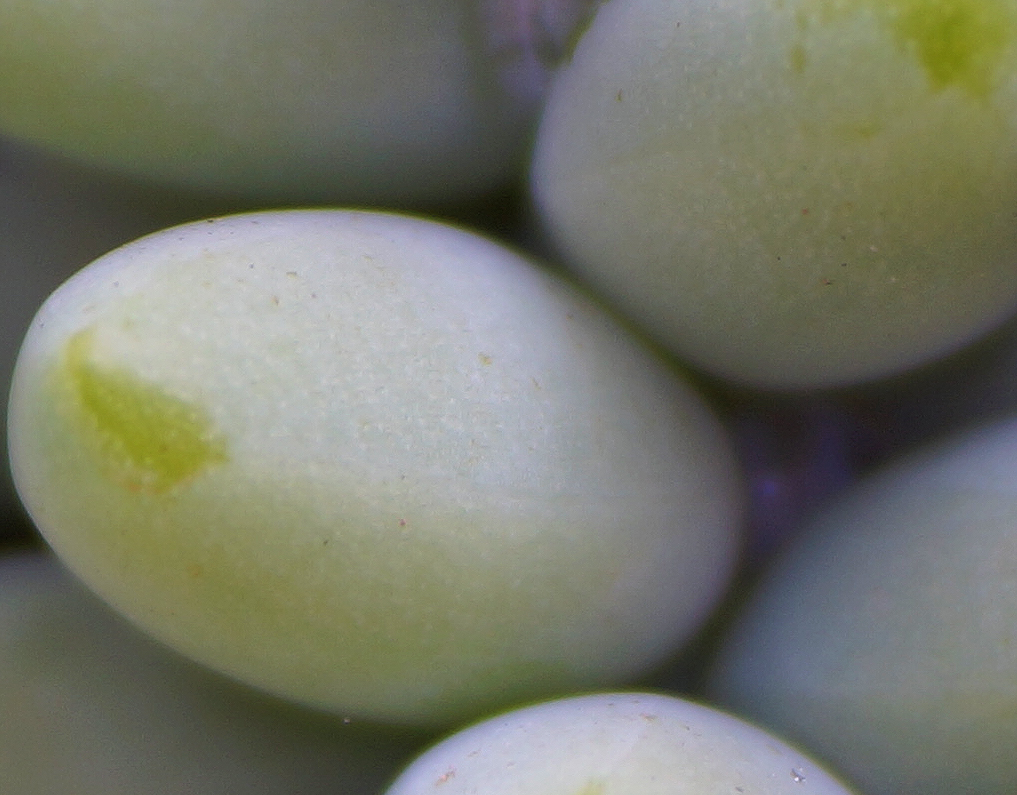
Distant landscape
The photos below show buildings approximately 2 km away. The atmospheric conditions were not ideal for long-distance shooting, as shown by the wavy lines of the buildings.
For a more accurate assessment, I also took some photos with telephoto lenses with similar focal length. The CZJ 180mm F2.8 is a well known and recognized high-quality lens. The aperture used for the CZJ 180mm was F5.6, which is the aperture for which this lens works at its peak performance. The Fujinon 54-270mm F4.5 is a lens that was designed for professional use. It was the Fuji's response to the Nikon 50-300mm F4.5, which was one of the most desired lenses by professionals in the late 70's. The performance of the Fujinon 54-270mm is not exceptional by modern standards, but it is quite reasonable for a zoom lens, especially when aperture is closed to F8 and focal length is less than 200mm.
full view:
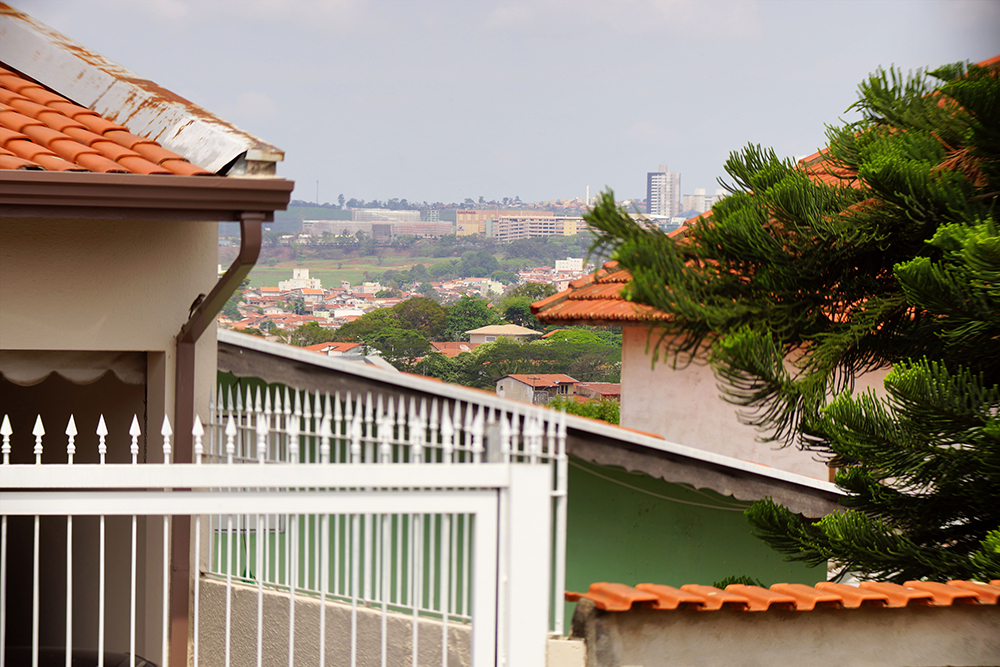
Distant landscape - tele macro lens (binocular lens) at F8 - center 100% crop:

Distant landscape - Fujinon 54-270mm at 200mm and F4.5 - center 100% crop:
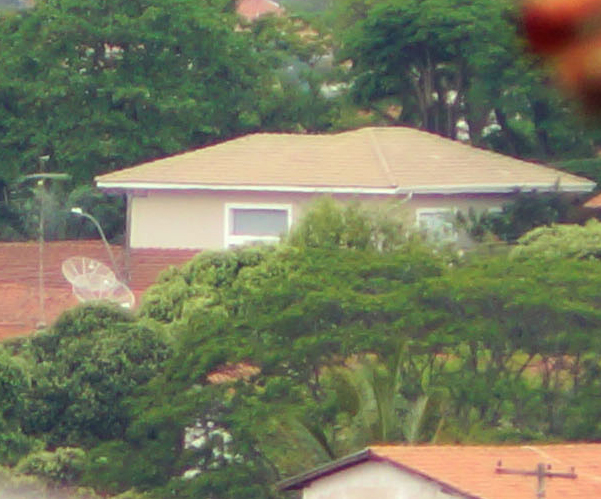
Distant landscape - Fujinon 54-270mm at 200mm and F8 - center 100% crop:

Distant landscape - CZJ Sonnar 180mm at F5.6 - center 100% crop:
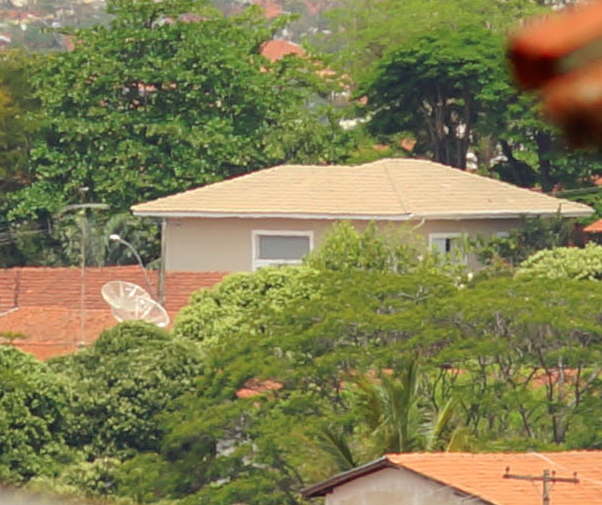
Distant landscape - tele macro lens (binocular lens) at F8 - off-center 100% crop:

Distant landscape - Fujinon 54- 270mm at 200mm and F4.5 off-center 100% crop:
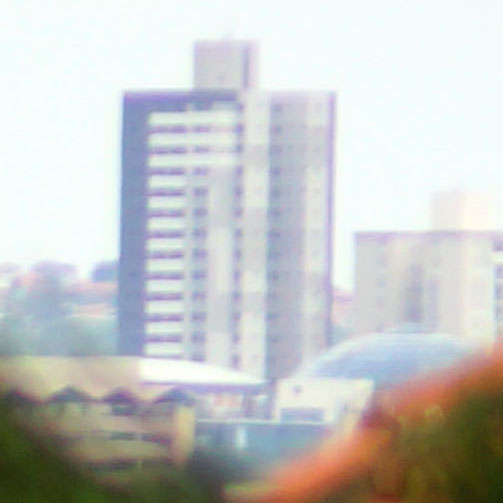
Distant landscape - Fujinon 54- 270mm at 200mm and F8 - off-center 100% crop:

Distant landscape CZJ Sonnar 180mm at F5.6 - off-center 100% crop:
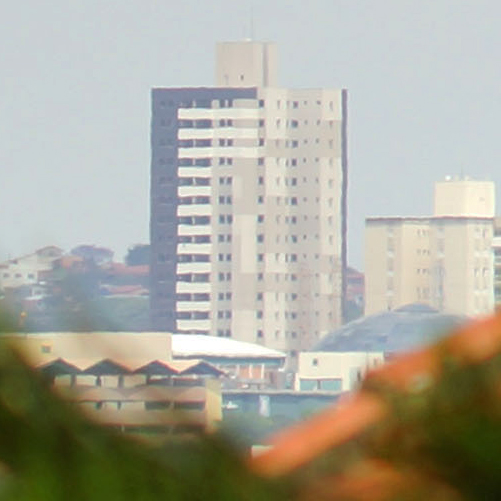
ANALYSIS OF THE RESULTS
Center
Performance of the tele macro lens at F8 was as good as the CZJ 180mm at F5.6, and better than the Fujinon 54-270mm wide open (F4.5). The Fujinon at F8 was as good as the CZJ Sonnar at F5.6.
Off-center
The performance of tele macro lens was worse than the Fujinon F8, but better than the Fujinon at F4.5. As expected, the CJZ 180mm at F5.6 had the best performance of all.
_________________
If raindrops were perfect lenses, the rainbow did not exist. |
|
| Back to top |
|
 |
philslizzy


Joined: 07 Aug 2012
Posts: 4745
Location: Cheshire, England
|
 Posted: Mon Oct 06, 2014 10:47 pm Post subject: Posted: Mon Oct 06, 2014 10:47 pm Post subject: |
 |
|
philslizzy wrote:
A great idea, so which should I cannibalise? My 1947 Nippon Kogaku 7x50 Naval binos, My 60's Baush and Lomb 10x50's or my 70's Boots 8x30's All superb instruments I may add. Or perhaps a charity shop pair that are out of collimation?
_________________
Hero in the 'messin-with-cameras-for-the-hell-of-it department'. Official. |
|
| Back to top |
|
 |
luisalegria


Joined: 07 Mar 2008
Posts: 6602
Location: San Francisco, USA
Expire: 2018-01-18
|
 Posted: Mon Oct 06, 2014 11:50 pm Post subject: Posted: Mon Oct 06, 2014 11:50 pm Post subject: |
 |
|
luisalegria wrote:
Very nice results actually.
I have a couple of these extemporized lenses. Both based on some sort of military optics (I didn't do the adapting).
Both seem to be achromatic doublets like this.
_________________
I like Pentax DSLR's, Exaktas, M42 bodies of all kinds, strange and cheap Japanese lenses, and am dabbling in medium format/Speed Graphic work. |
|
| Back to top |
|
 |
scsambrook


Joined: 29 Mar 2009
Posts: 2167
Location: Glasgow Scotland
Expire: 2011-11-18
|
 Posted: Tue Oct 07, 2014 9:16 am Post subject: Posted: Tue Oct 07, 2014 9:16 am Post subject: |
 |
|
scsambrook wrote:
| philslizzy wrote: |
| A great idea, so which should I cannibalise? My 1947 Nippon Kogaku 7x50 Naval binos, My 60's Baush and Lomb 10x50's or my 70's Boots 8x30's All superb instruments I may add. Or perhaps a charity shop pair that are out of collimation? |
Easy answer - butcher the 1947 Nippon 7x 50s, nobody wants them big heavy old navy binocs these days 
But (much) more seriously, are they commercial post-war production or a refurbished ex-navy glass?
Apologies to Gerald for diverting this thread somewhat. I fear I have nothing to add on the subject of adapting binocular objectives but do have an interest in this particular branch of optical munitions technology.
_________________
Stephen
Equipment: Pentax DSLR for casual shooting, Lumix G1 and Fuji XE-1 for playing with old lenses, and Leica M8 because I still like the optical rangefinder system. |
|
| Back to top |
|
 |
philslizzy


Joined: 07 Aug 2012
Posts: 4745
Location: Cheshire, England
|
 Posted: Tue Oct 07, 2014 9:47 am Post subject: Posted: Tue Oct 07, 2014 9:47 am Post subject: |
 |
|
philslizzy wrote:
| scsambrook wrote: |
| philslizzy wrote: |
| A great idea, so which should I cannibalise? My 1947 Nippon Kogaku 7x50 Naval binos, My 60's Baush and Lomb 10x50's or my 70's Boots 8x30's All superb instruments I may add. Or perhaps a charity shop pair that are out of collimation? |
Easy answer - butcher the 1947 Nippon 7x 50s, nobody wants them big heavy old navy binocs these days 
But (much) more seriously, are they commercial post-war production or a refurbished ex-navy glass?
Apologies to Gerald for diverting this thread somewhat. I fear I have nothing to add on the subject of adapting binocular objectives but do have an interest in this particular branch of optical munitions technology. |
First, my apologies too Gerald, its a great idea, I just want to make sure I'm not butchering anything valuable before I have a go at your excellent idea.
Not refurbished in the least but maybe ex Naval because of the salt crusting inside the screw threads of the objectives. Photos here, you can probably ID them with the info shown. If they are worth anything to you make me an offer, it would be a shame to butcher something like this. I can give more info in a PM.
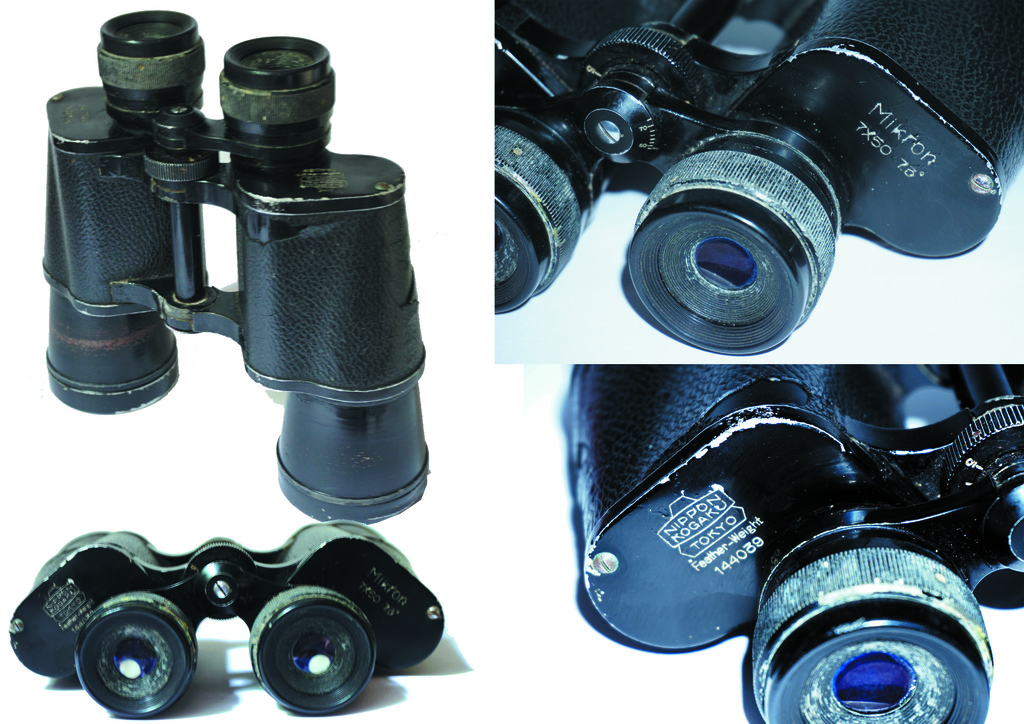
_________________
Hero in the 'messin-with-cameras-for-the-hell-of-it department'. Official. |
|
| Back to top |
|
 |
scsambrook


Joined: 29 Mar 2009
Posts: 2167
Location: Glasgow Scotland
Expire: 2011-11-18
|
 Posted: Tue Oct 07, 2014 11:12 am Post subject: Posted: Tue Oct 07, 2014 11:12 am Post subject: |
 |
|
scsambrook wrote:
That's a nice old Nikon binocular - some of these old ones are not only excellent performers but are worth more money than one might expect (Phil - I sent you a PM ) and I'd urge anyone fancying following Gerald's interesting example to check before they start.
_________________
Stephen
Equipment: Pentax DSLR for casual shooting, Lumix G1 and Fuji XE-1 for playing with old lenses, and Leica M8 because I still like the optical rangefinder system. |
|
| Back to top |
|
 |
Gerald


Joined: 25 Mar 2014
Posts: 1196
Location: Brazil
|
 Posted: Wed Oct 08, 2014 5:39 pm Post subject: Posted: Wed Oct 08, 2014 5:39 pm Post subject: |
 |
|
Gerald wrote:
Of course I do not recommend sacrificing a good binoculars for an experimente like this. However, there are millions of cheap Japanese, Russian, etc., unused binoculars in drawers, closets and bookshelves. Most likely these binoculars have fungus, hazy prisms and lenses, which would have to be dismantled anyway for cleaning and maintenance. These binoculars are good candidates to "borrow" the front lens. The removal of the objective is a reversible operation and the lens can return to binoculars after the experiment. It is interesting to put a mark on the lens with a felt pen, allowing it goes back in exactly the same original angular orientation. With this precaution, the risk of losing collimation is practically zero.
An alternative to a binoculars objective is an achromatic close-up lens with power from +3 to +5 diopters. The focal length in millimeters of the tele macro lens will be given by:
FL = 1000 / D
For example, if D = +4 diopters, then FL = 250mm
Orientation of the lens is important, and is the reverse of that used in macro photography. The surface of the close-up lens that faces the subject in macro photography should be facing the camera sensor when the lens works as a telephoto.
_________________
If raindrops were perfect lenses, the rainbow did not exist. |
|
| Back to top |
|
 |
|
|
|
You cannot post new topics in this forum
You cannot reply to topics in this forum
You cannot edit your posts in this forum
You cannot delete your posts in this forum
You cannot vote in polls in this forum
|
